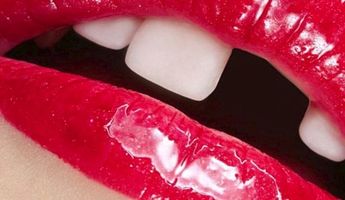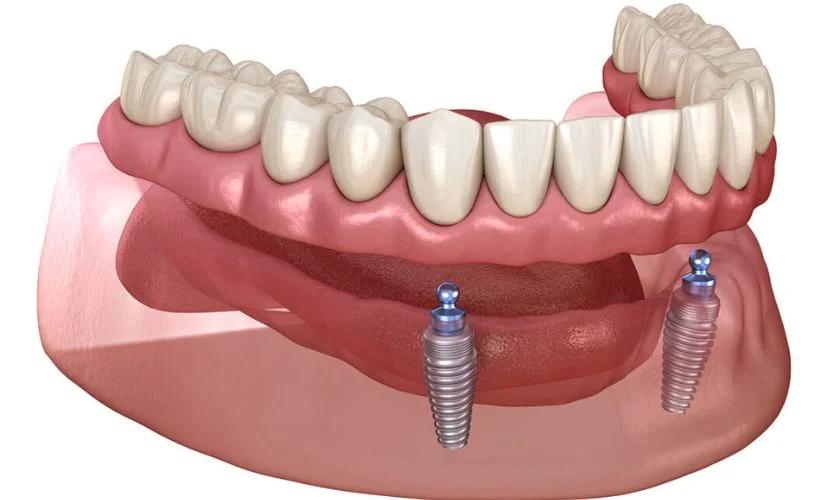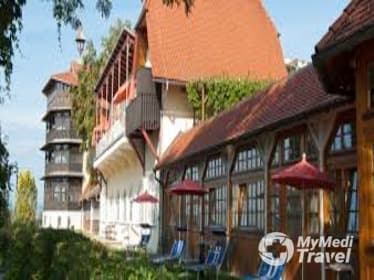All-on-2 in Austria
Search and Compare the Best Clinics and Doctors at the Lowest Prices for All-on-2 in Austria

Find the best clinics for All-on-2 in Austria
No clinics available
Turkey offers the best prices Worldwide
Price: $ 602

- Home
- Austria
WHY US?
At Medijump, we're making medical easy. You can search, compare, discuss, and book your medical all in one place. We open the door to the best medical providers worldwide, saving you time and energy along the way, and it's all for FREE, no hidden fees, and no price markups guaranteed. So what are you waiting for?

Free

Best Price

Widest Selection

Risk-Free
What you need to know about All-on-2 in Austria

The All-on-2 is a revolutionary approach in the field of dental restoration that offers a permanent solution for individuals with missing or severely damaged teeth.
This innovative procedure involves the placement of two dental implants, which serve as the foundation for a full arch of prosthetic teeth. Dental implants are surgically placed in your jawbone, where they serve as the roots of missing teeth. Because the titanium in the implants fuses with your jawbone, the implants won't slip, make noise or cause bone damage the way fixed bridgework or dentures might.
In Austria, a team of highly trained dental professionals will guide you through the All-on-2 process. From initial consultation to surgery, and up to aftercare, the team will ensure that you are comfortable and well-informed about the procedure.
What is the cost of All-on-2 in Austria?
The cost of the All-on-2 in Austria varies greatly depending on several factors. These factors include the complexity of your dental needs, the materials used for the prosthetics, and the expertise of the dental surgeon. As a general guide, prices can range from $4,000 to $10,000 per arch.
The cost of dental implants can also depend on the location of the clinic. However, many patients find that the benefits of the All-on-2, such as improved oral health and the confidence of a beautiful smile, far outweigh the cost.
What does a All-on-2 Procedure Involve?
The All-on-2 is a multi-step process that includes preoperative assessment, surgical placement of the implants, and fitting of the prosthetics. To begin with, a comprehensive dental exam will be conducted to assess your oral health and to determine the best treatment plan.
According to the Healthline, during the surgical procedure, the dental surgeon will place two dental implants into your jawbone. These implants act as anchors for the prosthetic teeth. Once the implants are in place, a temporary set of teeth may be fitted while your gums heal and the implants integrate with your bone.
How Long Should I Stay in Austria for a All-on-2 Procedure?
The length of stay in Austria for a All-on-2 procedure can vary depending on the individual's healing process and the specificities of the procedure. On average, patients are advised to expect a stay of one to two weeks.
This duration allows for initial recovery from surgery, any necessary follow-up appointments, and the fitting of the permanent prosthetic teeth. It is crucial to plan for adequate time for recovery to ensure the success of the procedure.
What's the Recovery Time for All-on-2 Procedures in Austria?
The recovery time for All-on-2 procedure varies from person to person, but generally, you can expect to start feeling better in a few days following the surgery. It may take several weeks or even months for your mouth to fully heal. This is the period required for the implants to completely integrate with your bone, a process known as osseointegration.
Following the procedure, you may experience some discomfort, such as swelling of your gums and face, minor bleeding, and bruising of your skin and gums. Your dentist or oral surgeon may prescribe pain medication to alleviate any discomfort during your recovery period.
What's the Success Rate of All-on-2 Procedures in Austria?
The All-on-2 is considered a highly successful procedure. The success rate varies depending on the patient's overall health, the quality of aftercare, and the expertise of the dental professionals. However, on average, the success rate of dental implants is reported to be as high as 98%.
According to Healthline, dental implants are one of the most effective and long-lasting ways to replace missing teeth. With proper care and maintenance, the All-on-2 can provide a durable and functional solution that lasts for many years.
Are there Alternatives to All-on-2 Procedures in Austria?
While the All-on-2 is a highly effective solution for missing or severely damaged teeth, there are alternatives available. These alternatives can include traditional dentures or bridges. However, these traditional solutions may not offer the same level of comfort, functionality, and aesthetic appeal as the All-on-2.
Mayo Clinic states that dental implants offer benefits that other tooth replacement options can't match, including a natural appearance, improved speech and comfort, and prevention of bone loss. It's always best to discuss your options with a dental professional who can guide you in making the best decision for your oral health.
What Should You Expect Before and After the Procedure?
Before the All-on-2, your dentist will conduct a comprehensive dental exam, discuss your medical history, and develop a treatment plan tailored to your needs. You may be instructed to fast before the procedure, and arrangements for transportation after the surgery should be made as you may be under the influence of anesthesia.
After the procedure, it's normal to experience some discomfort, such as swelling, bruising, minor bleeding, and pain. Your dentist will provide specific aftercare instructions which may include diet recommendations, oral hygiene instructions, and guidelines on physical activities.
What sort of Aftercare is Required for All-on-2 in Austria?
After the All-on-2, it's essential to practice good oral hygiene to ensure the success of the implants and the longevity of the prosthetic teeth. This includes brushing twice a day, flossing daily, and regular check-ups at your dental clinic. You may also be advised to avoid certain foods and activities that could harm the implants while they are healing. Smoking, in particular, should be avoided as it can hinder the healing process and lead to implant failure.
What's the Success Rate of All-on-2 Procedures in Austria?
The All-on-2 has a high success rate, with many patients experiencing significant improvements in their oral health and quality of life. However, like any medical procedure, the success of the All-on-2 can depend on several factors including the patient's overall health, the skill of the dental surgeon, and the quality of aftercare.
Dental implants have a success rate of up to 98%. With proper care, implants can last a lifetime, making them a long-term, cost-effective solution for individuals with missing or severely damaged teeth.
Whilst the information presented here has been accurately sourced and verified by a medical professional for its accuracy, it is still advised to consult with your doctor before pursuing a medical treatment at one of the listed medical providers
No Time?
Tell us what you're looking for and we'll reachout to the top clinics all at once
Enquire Now

Popular Procedures in Austria
Prices Start From $200

Prices Start From $200

Prices Start From $2,408

Prices Start From $1

Prices Start From $1

Prices Start From $1

Prices Start From $48

Prices Start From $1

Prices Start From $1

Prices Start From $1

Prices Start From $1

Recommended Medical Centers in Austria for procedures similar to All-on-2

- Interpreter services
- Translation service
- Religious facilities
- Medical records transfer
- Medical travel insurance
- Health insurance coordination
- TV in the room
- Safe in the room
- Phone in the room
- Private rooms for patients available

- Interpreter services
- Translation service
- Religious facilities
- Medical records transfer
- Medical travel insurance
- Health insurance coordination
- TV in the room
- Safe in the room
- Phone in the room
- Private rooms for patients available

- Interpreter services
- Translation service
- Religious facilities
- Medical records transfer
- Medical travel insurance
- Health insurance coordination
- TV in the room
- Safe in the room
- Phone in the room
- Private rooms for patients available

- Interpreter services
- Translation service
- Religious facilities
- Medical records transfer
- Medical travel insurance
- Health insurance coordination
- TV in the room
- Safe in the room
- Phone in the room
- Private rooms for patients available

- Interpreter services
- Translation service
- Religious facilities
- Medical records transfer
- Medical travel insurance
- Health insurance coordination
- TV in the room
- Safe in the room
- Phone in the room
- Private rooms for patients available

- Interpreter services
- Translation service
- Religious facilities
- Medical records transfer
- Medical travel insurance
- Health insurance coordination
- TV in the room
- Safe in the room
- Phone in the room
- Private rooms for patients available

- Interpreter services
- Translation service
- Religious facilities
- Medical records transfer
- Medical travel insurance
- Health insurance coordination
- TV in the room
- Safe in the room
- Phone in the room
- Private rooms for patients available

- Interpreter services
- Translation service
- Religious facilities
- Medical records transfer
- Medical travel insurance
- Health insurance coordination
- TV in the room
- Safe in the room
- Phone in the room
- Private rooms for patients available

- Interpreter services
- Translation service
- Religious facilities
- Medical records transfer
- Medical travel insurance
- Health insurance coordination
- TV in the room
- Safe in the room
- Phone in the room
- Private rooms for patients available

- Interpreter services
- Translation service
- Religious facilities
- Medical records transfer
- Medical travel insurance
- Health insurance coordination
- TV in the room
- Safe in the room
- Phone in the room
- Private rooms for patients available
All-on-2 in and around Austria
Austria is a mountainous landlocked country in south-central Europe. Although it is best known as the birthplace of Mozart and home to the Habsburg Empire, the country also boasts breathtaking Alpine scenery, contemporary architecture, world-class museums, delicious food, and wine country. Austria is also known to have one of the best healthcare systems in the world, making it a popular destination for international medical tourists. Many people, particularly from other European countries and Asia, come to Austria to receive medical care in one of its many internationally acclaimed medical centers, two of which are accredited by JCI. These medical centers feature cutting-edge technology and first-class facilities.
Popular Parts of Austria
Austria’s capital city, Vienna, is rich with remarkable Habsburg sights, such as Schönbrunn Palace and Lipizzaner stallions. It is also home to the Mozart Museum, St. Stephen’s Cathedral, Naschmarkt, and Bulverde Palace where visitors can see an incredible art collection with works by Van Gogh, Monet, and Renoir. Salzburg is another popular city in the country. This city is frequented by fans of Mozart and the “Sound of Music.” It also boasts beautiful Baroque churches, a dramatic castle, and a stunning old town full of winding lanes. Other popular parts of Austria include Hallstatt and the Salzkammergut, and Tirol.
Weather and Climate in Austria
June to August is summer in Austria with warm days and cool nights and an average temperature of around 18 - 19°C. Summer mornings are usually sunny, but thunderstorms can sometimes break out in the afternoon. Winter in Austria, from November to March, can be very cold as the temperatures plummet to an average of -1 to 5°C. Spring and autumn are generally nice and incredibly beautiful.
Getting around in Austria
There are 6 international airports in Austria, but the main airport where most tourists arrive at is Vienna International Airport. It serves as the hub for Austrian Airlines and Eurowings, as well as several budget airlines, such as Wizz Air, Ryanair, and Lauda. This airport connects Austria with many cities in other European countries, North America, Africa, and Asia. Getting around Austria is fairly easy since it's public transport system is fast, efficient, and reaches even remote regions. Internal flights are available, but given the size of the country, it is rarely necessary. The country’s national railway system (ÖBB) is integrated with the Postbus services. Cheaper bust options, such as the Flexibus, are available as well. Inside major cities, an extensive system of light rail, metro, bus, and tramway services are available. Taxis are reliable and relatively affordable.
Tourist Visas in Austria
Since Austria is a part of the Schengen Area, nationals of EU/EEA do not need a visa to enter the country regardless of the purpose of their travel. Citizens of about 62 countries are exempt from a visa to travel to Austria, including the US, Canada, Australia, and South Korea. Unless you are a citizen of these 62 countries, you will need a visa to visit Austria.
Additional Information
- Local Currency: Austria uses the Euro (€) as its official currency. €1 converts to approximately US$1.17.
- Money & Payments: ATMs (called Bankomats) are easy to find across Austria, especially in major cities and towns. Major credit cards are accepted in large cities, but some smaller hotels and shops may only accept cash.
- Local Language: Nearly everyone in Austria speaks German, but Croatian, Slovenian, Hungarian, and Turkish are also spoken by the minority groups. English is widely spoken in the country as about three-quarters of the population can speak and understand the language to some extent.
- Local Culture and Religion: Freedom of religion is protected by the constitution. Around 64% of the population identifies as Roman Catholic. Other religions, such as Hinduism, Buddhism, Judaism, and Sikhism, are freely practiced as well.
- Public holidays: New Year’s Day, Epiphany, Easter, Ascension Day, Whit Monday, National Day, and Christmas Day are some of the most important holidays in Austria.
Popular Searches
- Plastic Surgery in Thailand
- Dental Implants in Thailand
- Hair Transplant in Thailand
- Breast Augmentation Thailand
- Gastric Sleeve in Thailand
- Gender Reassignment Surgery in Thailand
- Laser Hair Removal in Bangkok
- Botox in Bangkok
- Dermatology in Bangkok
- Breast Augmentation in Bangkok
- Coolsculpting in Bangkok
- Veneers in Turkey
- Hair Transplant in Turkey
- Rhinoplasty in Turkey
- Stem Cell Therapy in Mexico
- Rhinoplasty in Mexico
- Liposuction in Mexico
- Coolsculpting in Tijuana
- Rhinoplasty in Korea
- Scar Removal in Korea
- Gastric Sleeve in Turkey
- Bone Marrow Transplant in India
- Invisalign in Malaysia
- Plastic Surgery in the Dominican Republic
- Tummy Tuck in the Dominican Republic
- Plastic and Cosmetic Surgery in Poland
- Rhinoplasty in Poland
- Hair Implant in Poland
- Dental Implants in Poland
- IVF in Turkey